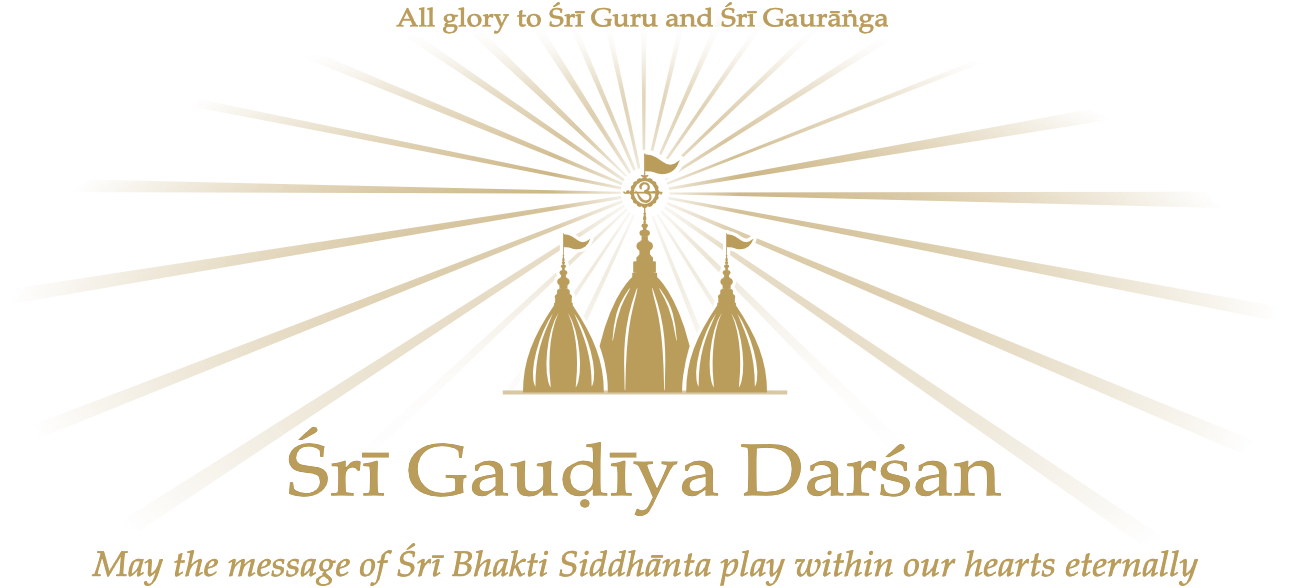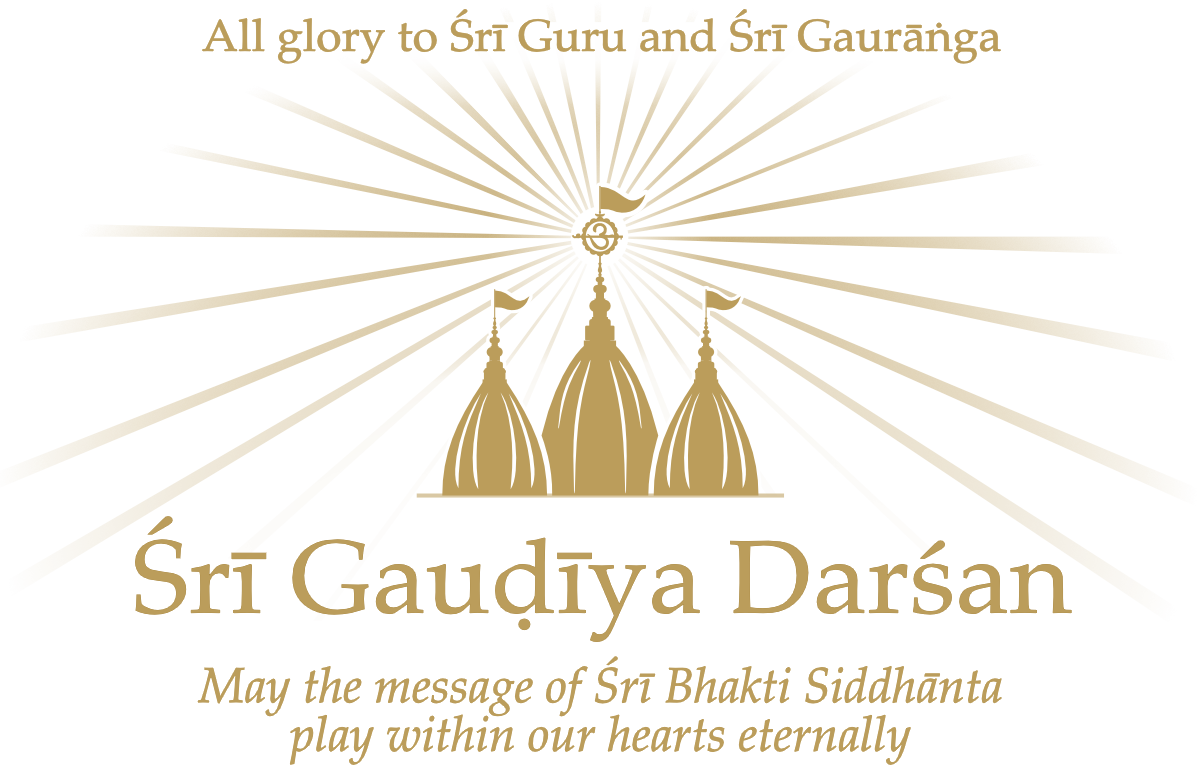Śrīla Bhakti Vinod Ṭhākur comprehensively addresses the issue.
Deity Worship and Idolatry
Om Viṣṇupād Śrīla Bhakti Vinod Ṭhākur
Translated to English from the Bengali article
Śrī-Mūrti-sevā o Pautalikatā
published in Gauḍīya magazine.
The Supreme Lord’s Form, Qualities, and Pastimes combine to reveal His nature. If we say that He is formless, then we negate His eternal, spiritual, conscious, joyful form. He is not formless because He has no material form; His qualities are inconceivable.¹ If we say that He is only all-pervading, then we are saying that His qualities are limited. Although He is medium sized, He is simultaneously present in full everywhere—this quality is extraordinary and inconceivable. If we say He is impersonal, then we are attributing to Him the one and only quality of being impersonal and in effect saying that He is limited. If we say that He is simultaneously personal and impersonal, then we recognise His quality of being extraordinary and inconceivable. “He creates all living beings in the wombs of their mothers and with them further develops the abode of joy that is this world; He bestows happiness on living beings to the extent that they perform actions that are pleasing to Him”—if we say that He created the world and all living beings according this idea, then we speak in opposition to His inconceivable Pastimes. If the omnipotent Lord, whose every wish is fulfilled, desired that the world would greatly improve from where it is now and become free from all deficiencies, then just by His desire the world would immediately become that way. “This has happened to a certain extent, and He will do part of this by way of the souls in the world”—those who think in this way consider the Lord limited like an unproductive goldsmith, blacksmith, or carpenter.
By way of these feeble and inconsequential conclusions, many of the conceptions adored by the ignoble (non-aryans) have spread throughout the world. Although, in all respects, the Lord by nature is one, He adopts difference appearances according to the qualifications of the souls who observe Him. Denying the Lord’s oneness based on one’s own vision of Him is also to oppose His quality of being the supreme controller.² Although He cannot be overshadowed, the Lord manifests brightly as the Deity through the practice of devotion; this is the work of His inconceivable power. Serving this brightly manifest Deity is the proper engagement for the life of a devotee. Those who reject this, conclude that the Absolute (Brahma) is formless and not innately personal, and create and worship a false form to attain formless Brahma are outright idolaters. The fruit of their worship is idolatry. Amongst them, some, considering themselves wise, reject such idolatry, and engage in the pursuit of self-realisation thinking om to be a bow, the self to be an arrow, and Brahma to be their target.* So doing, they reason that when idolaters open their eyes, they see an earthen or wood replica, and when they close their eyes, they see a replica of that replica within their hearts and direct all their love towards that but do not attain Brahma thereby. They have spoken truthfully in this regard, but they themselves engage in something that is no different from this.
A form made by anyone who has not seen the Supreme Lord’s form is necessarily an idol. For example, if I make a form of Sanātan Ṛṣi when I have never seen him, then that form will not be accurate. But whether or not I will feel Sanātan’s presence if I express love for that form is a subject that may be doubted. If someone has seen and taken a photograph of Sanātan, then when they see that photograph and close their eyes, they will see the real Sanātan in their heart. The photograph simply gives rise to genuine cognition. This is not a case of idolatry. Rather, this is a method accepted by the scientifically minded as authentic.
The pursuit of self-realisation through the method of conceiving of om as a bow, the self as an arrow, and Brahma as the target is an elementary matter meant only for beginners.³ The heart of a practitioner does not reach perfection thereby. So long as they have not seen the Lord’s form, such methods, which are for the most part elementary, should be practised by practitioners in that stage. Those who have seen the Lord’s form always meditate on that form within their hearts, and to extend the service of that form into the material world, they manifest a Deity of that form. This Deity is a stimulus for those who see Him; the Deity bestows spiritual wealth on sincere practitioners. As a falsely imagined deity is inauspicious to those who have seen the Lord’s form, so also meditation on formless Brahma is injurious. All such methods are common prior to the attainment of the real goal. In colloquial language, they are called “groping for the goal”. All such conceptions that are opposed to the Lord’s form should be rejected in all respects.
Footnotes
1
avyaktaṁ vyaktim āpannaṁ manyante mām abuddhayaḥ
paraṁ bhāvam ajānanto mamāvyayam anuttamam
nāhaṁ prakāśaḥ sarvasya yoga-māyā-samāvṛtaḥ
mūḍho ’yaṁ nābhijānāti loko mām ajam avyayam
yeṣāṁ tv anta-gataṁ pāpaṁ janānāṁ puṇya-karmaṇām
te dvandva-moha-nirmuktā bhajante māṁ dṛḍha-vratāḥ
(Śrīmad Bhagavad-gītā: 7.24–5, 28)
“The unwise think the unmanifest (Brahma) has become manifest as Myself. They do not understand My transcendental, superexcellent eternal nature. Covered by My spiritual energy (yogamāyā), I am not manifest to everyone. The foolish do not understand that I am unborn and eternal. Performers of virtuous acts, whose sins have been destroyed, become free from the illusion of duality and serve Me with firm resolve.”
na chāntar na bahir yasya na pūrvaṁ nāpi chāparam
pūrvāparaṁ bahiś chāntar jagato yo jagach-chayaḥ
(Śrīmad Bhāgavatam: 10.9.13)
“The Lord has no interior and no exterior (He is all-pervading), no beginning and no end (He is eternal). He is the beginning and the end, the exterior and interior, of the universe. He is the universe.”
2
na te ’bhavasyeśa bhavasya kāranaṁ
vinā vinodaṁ bata tarkayāmahe
bhavo nirodhaḥ sthitir apy avidyayā
kṛtā yatas tvayy abhayāśrayātmani
(Śrīmad Bhāgavatam: 10.2.39)
“O unborn Lord, we cannot understand the cause of Your birth to be anything other than Your play. O abode of fearlessness, the creation, maintenance, and destruction are carried out by Your illusion, which is sheltered in You.”
*
praṇavo dhanuḥ, śaro hy ātmā, brahma tal lakṣyam uchyate
apramattena veddhavyaṁ śaravat tanmayo bhavet
(Muṇḍaka-upaniṣad: 2.2.4)
“Om is the bow, the self is the arrow, and Brahma is the target. The target, Brahma, should be shot at with an undistracted mind, and like the arrow, the self should become one with it.”
3
tvaṁ bhakti-yoga-paribhāvita-hṛt-saroja
āsse śrutekṣita-patho nanu nātha puṁsām
yad-yad-dhiyā ta urugāya vibhāvayanti
tat-tad-vapuḥ praṇayase sad-anugrahāya
(Śrīmad Bhāgavatam: 3.9.11)
“O Lord, O path that is heard about and then seen, You sit on the lotus of Your devotee’s hearts, which are infused with devotion. O object of the highest praise, You manifest whatever form Your devotees meditate on out of mercy for them.”
vidito ’si bhavān sākṣāt puruṣaḥ prakṛteḥ paraḥ
kevalānubhavānanda-svarūpaḥ sarva-buddhi-dṛk
(Śrīmad Bhāgavatam: 10.3.13)
“I have understood that You are the Lord Himself beyond material nature, the embodiment of pure conscious joy, the observer of all.”



Leave a Reply